LG 27GP850 Review: Faster, Clearer, Better
It's monitor review fourth dimension, and today nosotros're checking out the LG 27GP850. This is the true successor to the LG 27GL850, which is one of the most popular 1440p IPS gaming monitors of the concluding few years.
It's likewise a much more substantial update to the display than final year's refreshed 27GN850, with LG showing the clear goal of retaking the performance throne in this form of monitor.

The basic fundamentals are the same: this is a 27-inch 2560x1440 display using LG Nano IPS technology. Aforementioned 98% DCI-P3 gamut coverage, same adaptive sync support with G-Sync and AMD FreeSync. But there are three major additions that make this more than than just a refresh.
First is the college refresh rate. It's listed as a 165Hz monitor with an overclock up to 180Hz, up from 144Hz previously. It's however a medium-to-high refresh rate monitor, but a higher refresh rate is ever improve.

Side by side, LG accept optimized their overdrive to increase performance and reduce overshoot, something we'll be able to measure soon. It's yet a 1ms class monitor according to LG, merely just a "ameliorate" 1ms.
And finally, we besides get total backlight strobing support for the first time in an LG-made Nano IPS monitor.

All of this is being offered at the same price as the 27GL850: $500.
The new monitor is scheduled to go along auction in the coming weeks in about regions. LG provided us with the brandish alee of release, simply we've tested a final retail model that's ready to become.

In terms of pattern, this is your standard LG UltraGear monitor. The stand has received an overhaul, so we're not getting the sliding-cylinder design for height adjustability, but the new version is similar to LG's 2022-series monitors. The stand pillar and base apply plastic for their outer materials, information technology's got this new more than angular pillar that looks quite good, then V-shaped legs.
Overall adjustability is decent, the range of peak adjustability is generous, then information technology should be slap-up for near users' ergonomic setup, and this is achieved with less wobble than previous designs. In that location's also tilt and pivot support in example you want to use the monitor in a portrait orientation.
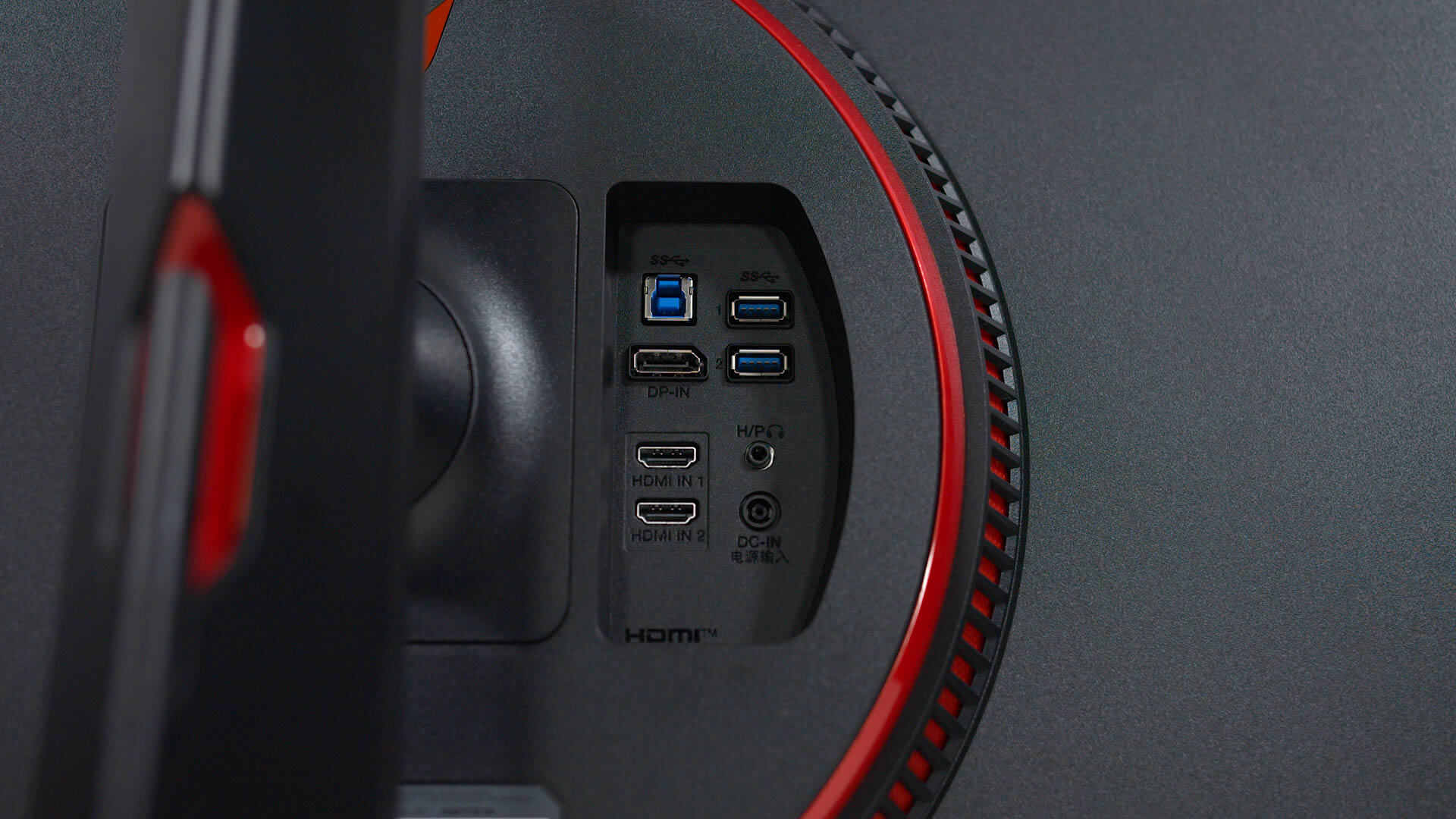
I also quite like how easy it is to access the 27GP850's ports on the rear, where y'all'll find a DisplayPort, two HDMI connectors and a couple of USB ports. This complicates wall mounting somewhat – this display does have a VESA mount – but I feel the ease of admission is worth it. The overall rear design is prissy, and I'm glad LG hasn't changed it substantially from previous monitors.

Equally for the OSD, it'south controlled through LG's usual directional toggle along the bottom edge of the display. LG have revamped the design to requite it a "cooler" artful but the functionality and layout is largely unchanged. You'll detect features like crosshairs to aid you cheat, black boosting modes, an FPS display which I always find handy, and the usual range of picture controls. I tend to notice LG monitor OSD's piece of cake to use and the customizable quick access controls are a dainty bonus.
Display Performance
Time for the all of import response time numbers and a look at panel performance. LG offers four overdrive settings, and nosotros'll work our manner through all of them. Every bit a quick reminder, we've updated our testing methodology for 2022 to exist more accurate, and you can learn more about the metrics we are using here.

Beginning up we have functioning in the Off way, which is without overdrive. As expected we get almost no overshoot, and we can see that native panel performance is around the vii.8ms mark on average. This is actually a very good outcome all things considered, but does fall curt of what is required for a true 180 Hz refresh rate, and then it might be time to enable overdrive.

When using the Normal mode, at 180Hz functioning does better noticeably compared to overdrive disabled, and LG has achieved this without increasing overshoot. A half-dozen.5ms grayness to grayness boilerplate response time is in line with several other IPS monitors, but we can do better than this. Allow'due south increment the overdrive up to Fast.


In this mode nosotros really start to see the benefits of LG'due south Nano IPS applied science and the additional tuning they've done with the new 27GP850. We get a response time average of 4.65ms which is fast, and that allows for 82% refresh rate compliance at 180Hz, impressive given our new and much stricter testing methods. Inverse ghosting has increased slightly simply information technology's not noticeable in practice, and this leads to a nifty cumulative deviation consequence of 407.
Like with LG'south previous display, there is also a crazy fast "Faster" manner which is designed specifically to hit a 1ms response time. The all-time upshot we achieved is one.25ms, so that claim is accurate, yet it's in a largely unusable style due to its changed ghosting. Overshoot is significant, and while the average response has improved to ii.88ms, cumulative departure is higher in this fashion compared to the previous way, indicating the residue of operation has swung too far into the "inverse ghosting" zone.
Dorsum to the Fast manner at present to assess performance across the refresh range. In this overdrive way, LG are keeping the boilerplate response fourth dimension around 4.5 to four.8ms beyond all refresh rates, with the merely factor that's changing being the level of overshoot. At loftier refresh rates, in a higher place 100Hz, the inverse ghosting charge per unit is solid and makes it unlikely you'll spot bright ghost trails, while retaining very fast response times. Cumulative deviation at these refresh rates is generally around 500 or below, which is pretty good. When nosotros go downwards a scrap lower than 100Hz, we do start to see more than changed ghosting, and this is somewhat noticeable at 85Hz and 60Hz equally the inverse ghosting rate is approaching thirty%. So at these lower refresh rates we yet have neat response times, but moderate levels of inverse ghosting.







In contrast, the Normal style is about 1.5ms slower across the board in terms of response times, simply does then with almost no overshoot at all refresh rates tested. When looking specifically at cumulative deviation, which highlights that balance betwixt speed and overshoot, the crossover point where Normal is improve than Fast is around 100Hz. That is to say, gamers looking to play mostly at high refresh rates should use the Fast mode, while those playing at lower refreshes should use Normal.
Now the platonic solution would have been to implement variable overdrive to switch between these settings depending on the refresh rate, only LG hasn't implemented that hither. In a sense there are two optimal overdrive modes, rather than the ideal state of affairs which is a single optimal setting.
However I also think that'due south being a flake unfair to LG. Normally when I talk almost displays not delivering a single overdrive mode experience, information technology's because each mode is unusable at a sure point in the refresh range. That could hateful decent operation at 144Hz but severe inverse ghosting at 60Hz. That'due south non really the instance with the 27GP850, and the differences betwixt the Normal and Fast modes are small overall. I actually institute information technology quite hard to decide which mode is better for adaptive sync gaming, ultimately I settled on the Fast way but overall information technology's a case where buyers can choose to either prioritize low overshoot with the Normal manner, or speed with the Fast mode, and get a pretty skilful feel across the lath.

The big question though is how does the 27GP850 compare to other monitors on the market place, and specifically how does it compare to the 27GL850? Well when talking about the best performance on offer at the maximum refresh charge per unit, the 27GP850 comes out looking very potent. This newly tweaked display offers performance in line with other current-generation fast IPS products, and a step above the 27GL850. Overshoot remains about the same as the 27GL850 here, but the new model is 24% faster – plus we're getting the added do good of 180Hz versus 144Hz which does improve clarity also.

Average grey to grey performance, measured across the refresh range, is also an interesting story. The inverse ghosting rate is college than with the 27GL850, but it also provides a thirty% faster response time on average. In general this makes it a fleck faster on boilerplate than other current-gen fast IPS panels similar those found in the MAG274QRF-QD, AW2721D and PG329Q.

When looking at cumulative departure, we practise see an improvement for the 27GP850, it now sits firmly among those new IPS panels we've just been talking about, although not generationally ahead. In comparison, last-gen versions similar 27GL850, S2721DGF and AG273QXP all sit down in the 580 to 540 range in this metric. So the 27GP850's outcome of 521 is in the range of 5 to 10 percentage amend, not a huge improvement but decent for what appears to only be overdrive tweaks, rather than an unabridged overhaul of LG'due south IPS technology – and it's doing this without variable overdrive.
While the 27GP850's functioning across these metrics is either the all-time or among the best of the IPS monitors I've tested, especially around its refresh rate, it'due south yet ultimately browbeaten by the Samsung Odyssey G7. Now granted these aren't the aforementioned class of monitor, the Odyssey is 40% more than expensive and is more of a flagship product with its 240Hz refresh charge per unit, but there is still that gap to the all-time you tin get today if you are willing to pay the price.

And as a reminder the Odyssey provides this functioning without much nighttime level smearing. Dark level functioning is in the realm of the 27GP850 despite using VA technology so Samsung continues to impress here.

At a fixed 120Hz, the 27GP850 is a very fast monitor and competes favorably with other displays. Similar we've talked about before, at the same level of overshoot the 27GP850 is eighteen% faster than the AG273QXP which uses LG's previous Nano IPS design, and quite a bit faster than the 27GL850 although with more than overshoot.

At 60Hz using the Normal overdrive fashion, the 27GP850 and 27GL850 deliver roughly the same functioning, the 27GP850 with a fleck less overshoot. It seems that virtually of the improvements made this generation are at college refresh rates.

Input latency is very low. Processing lag, the measure of how quickly the display takes an input and begins showing it on the screen, is under 0.5ms which is equally practiced as other monitors. Even so information technology's also backed upward with a high refresh rate, which reduces refresh latency compared to older 144Hz monitors. And and so with fast response times factored in, full latency is beneath 8ms. This is about thirty% better than the 27GL850 comparing best vs best.

Power consumption has decreased slightly beyond the generations. The 27GP850 consumes most 16% less power at the aforementioned level of brightness after calibration than the 27GL850, a minor improvement to efficiency but non that different to another 27-inch 1440p gaming monitors that I've benchmarked.

LG does support backlight strobing in one of two modes: you tin can apply it with adaptive sync, which is a bit of a surprise, but it does announced to work in conjunction with a variable refresh rate like we see with Asus ELMB-Sync monitors. Or you lot tin run it without adaptive sync, which gives a more traditional experience.
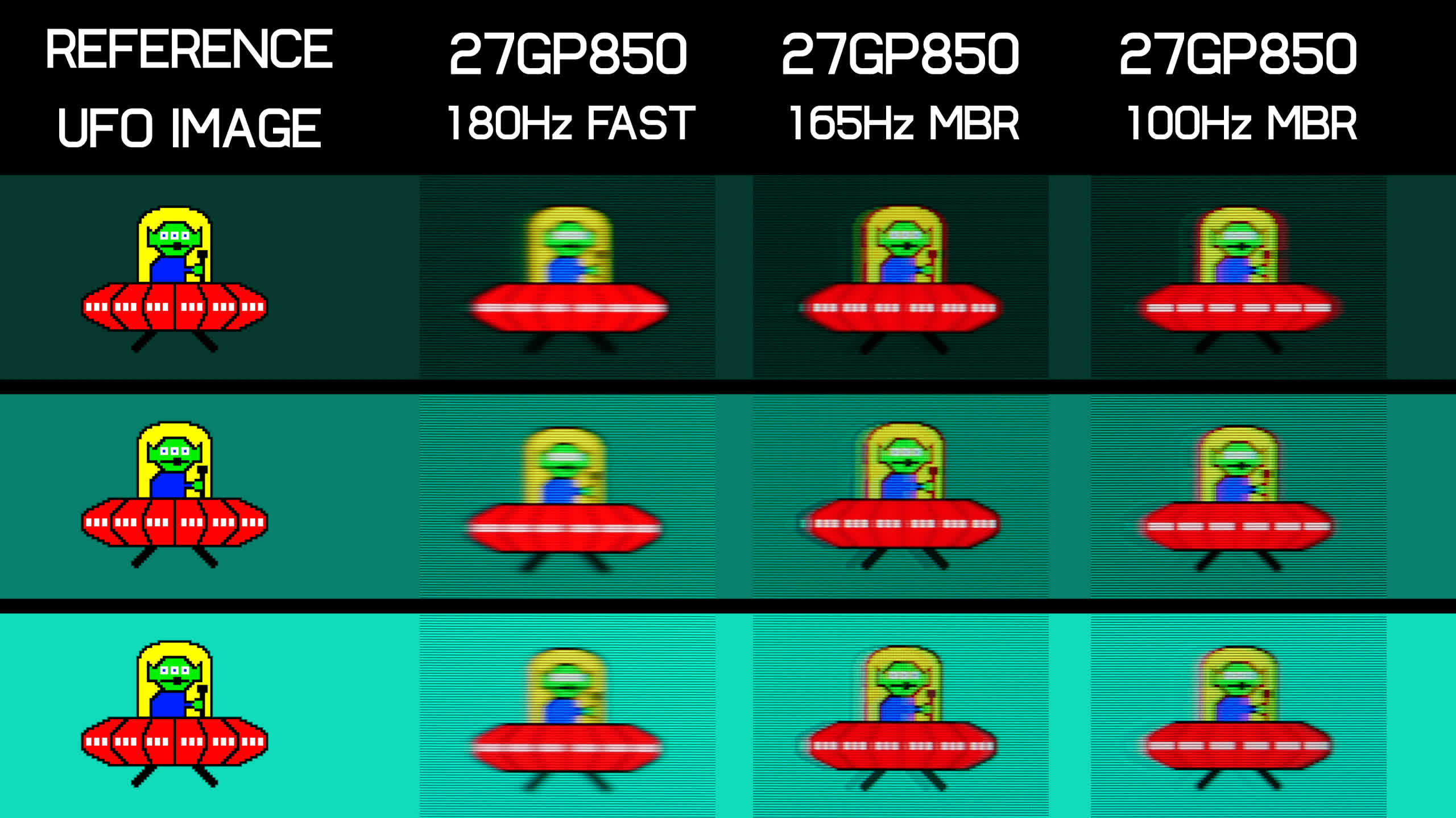
I'll start with performance without adaptive sync enabled. The 27GP850 allows you lot to run backlight strobing between a stock-still 165 Hz and 100 Hz in this mode, and the results are okay without being amazing. At 165Hz move clarity is improved, simply red fringing is yet present like with other Nano IPS panels that backlight strobe, and there'southward also a faint double paradigm. The red fringing issue is caused past a irksome red phosphor in LG'due south wide gamut backlight they use for their Nano IPS panels. The effect is minimized compared to the ViewSonic XG270QG which too allowed backlight strobing, but it'south nevertheless visible to some degree. How noticeable this is to you in games volition depend on your sensitivity to artefacts, I'd say it'southward worth experimenting with but overall it's merely a mediocre experience in my opinion.
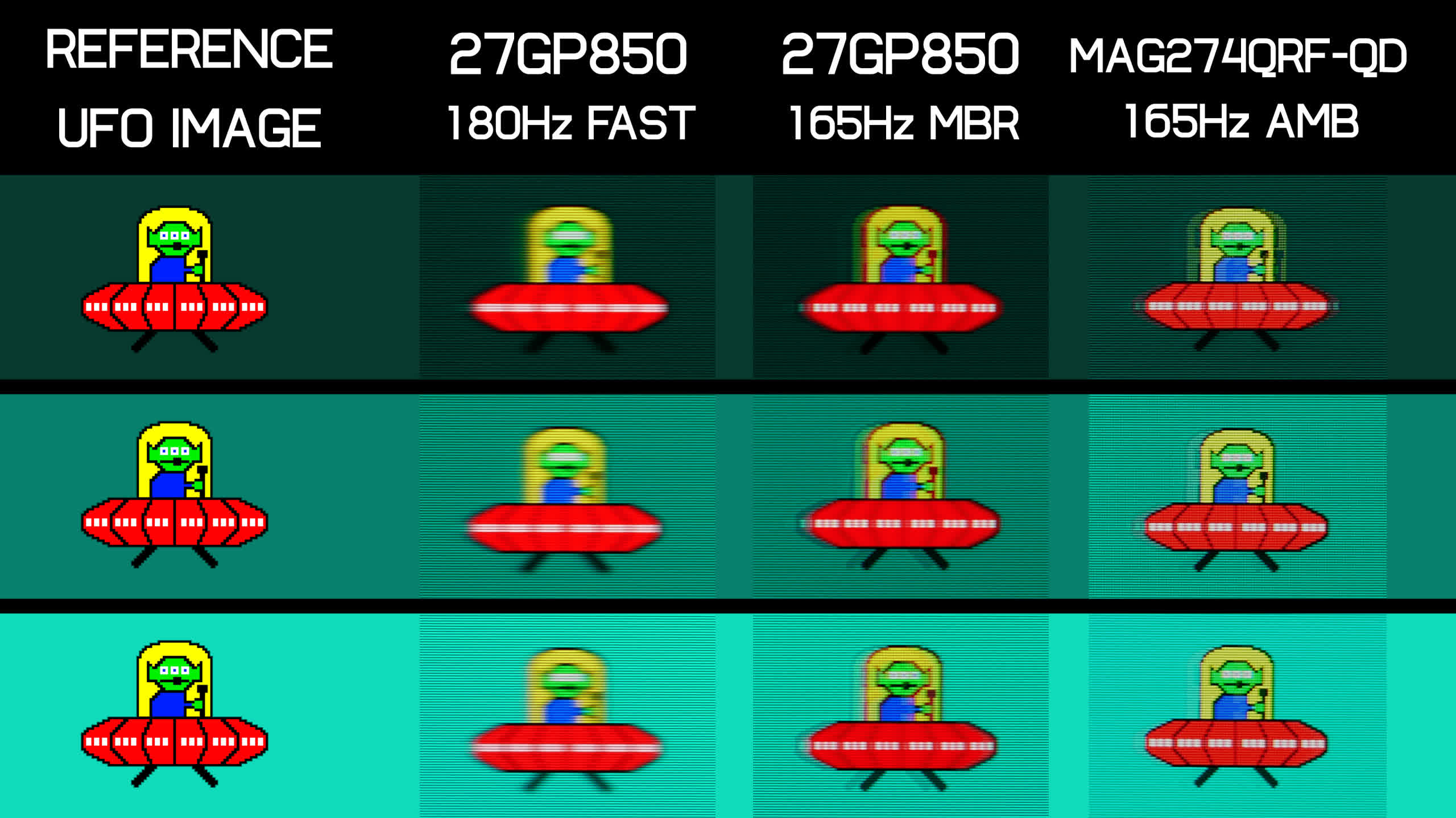
For instance if we bear witness the MSI MAG274QRF-QD's backlight strobing feature in a side by side comparing, you can clearly come across the deviation in clarity. The 27GP850 really has better clarity than the MSI when both are not strobing, but the MSI monitor is ameliorate in its AMB way. You'll also spot more red fringing with the 27GP850 as you lot subtract the refresh rate, which is something to go along in mind.
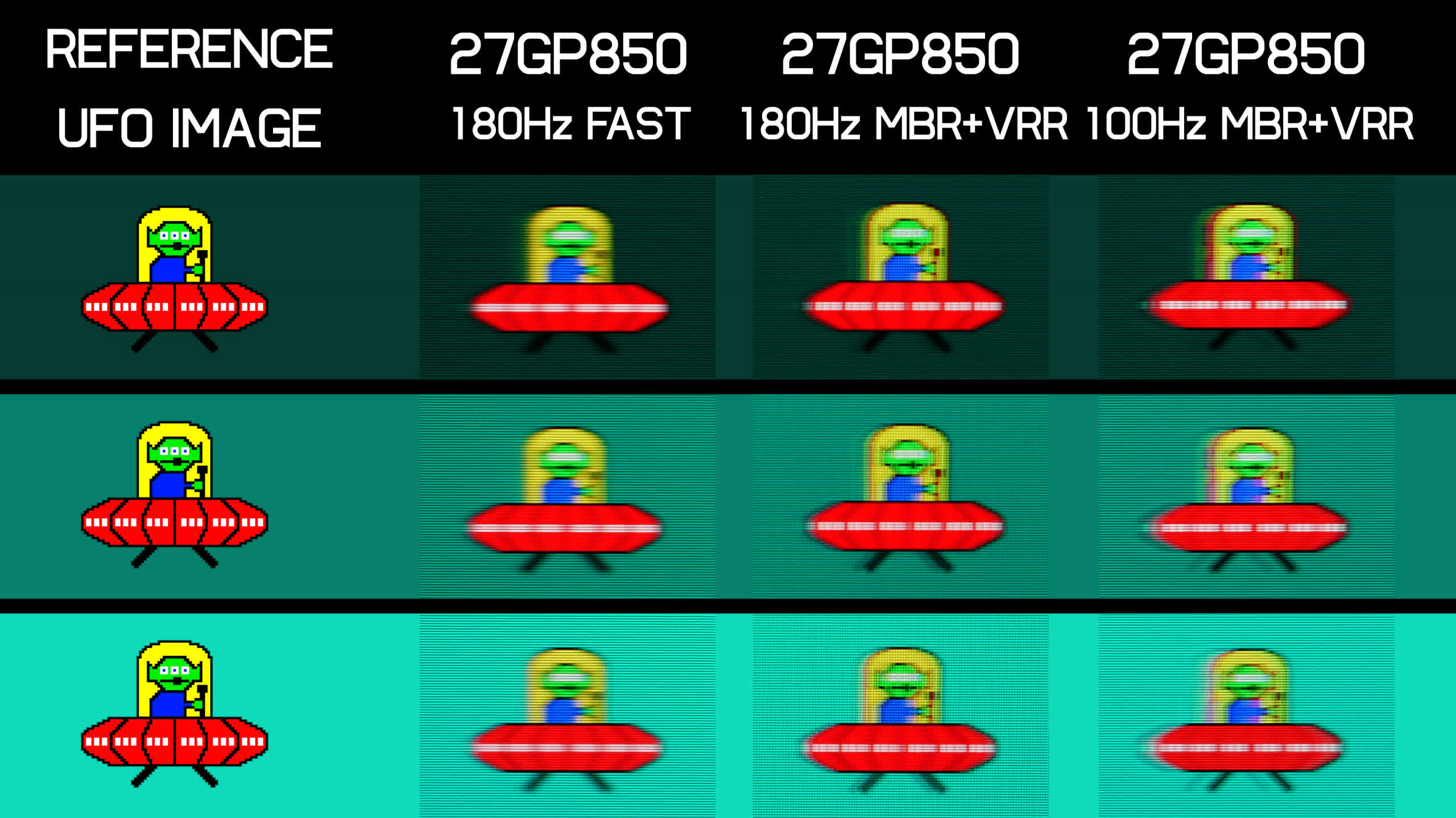
As for backlight strobing with a variable refresh rate, I exercise praise LG for beingness the second visitor I've seen endeavour this after Asus. Yet ultimately it doesn't work very well. The strobe itself isn't a unmarried strobe per frame, which causes strobe crosstalk at most refresh rates. Information technology's not terrible right up at 180Hz, but it's non that much less blurry than the regular non-strobed mode – it's just a different kind of blur. At lower refresh rates I saw varying degrees of success, and ultimately afterward playing a few games with strobing on and off, I tended to prefer the not-strobed image. Despite this, I would similar to see companies keep working on backlight strobing plus variable refresh rates as a perfect working solution would be pure gold for gaming monitors.
Colour Performance
Color Space: LG 27GP850 - D65-P3

Moving into color functioning now and like LG'due south previous Nano IPS displays, the 27GP850 also comes with a rated 98% DCi-P3 coverage, which in our testing measured in at 96%, among the best coverage of P3 that we've measured.
To compare this outcome to other monitors we can convert this result into Rec. 2022 coverage, with this color space existence massive and much larger than P3. Hither we tin see a good result for the 27GP850, with almost 70% Rec. 2022 coverage existence similar to many other displays that prioritize wide P3 colour gamuts.
Nonetheless the most contempo wide gamut IPS displays like MSI's MAG274QRF-QD take things one pace farther, with in excess of 80% Rec. 2022 coverage. This allows the MSI monitor to also back up full Adobe RGB coverage, which the 27GP850 does not. Having Adobe RGB coverage in add-on to P3 may be useful for some artistic workloads, so if that's important to yous so other panels will be ameliorate than the 27GP850. Despite this, LG are yet providing quite a broad gamut.



Factory calibration is average. The results are a fleck problematic in that gamma drops off quite a flake at the high stop, rather than sticking to the ideal well-nigh-2.ii value, and white balance on my unit of measurement was slightly tinted blue out of the box. This led to a moderately high deltaE grayscale result. And so when nosotros look at saturation and ColorChecker we also come across loftier deltaE numbers, as the 27GP850 does not clamp to an sRGB gamut out of the box. This causes oversaturation as evidenced by what we're seeing here.

When we compare this to other displays the results are mid-table for both ColorChecker and greyscale manufactory scale. Pretty typical for a wide gamut gaming monitor, but non amazing and not indicative of an attention to detail on the function of LG.
However, in a big positive for this display, LG practise provide a proper sRGB emulation mode which you can access in the display's settings. This is ane way to achieve more than accurate results for everyday PC usage. I would draw the sRGB mode equally boilerplate to practiced – it does work for clamping the gamut, and does allow effulgence adjustment, nonetheless it locks down greyscale controls, so we tin can't fine tune the results.
OSD Tweaked Performance
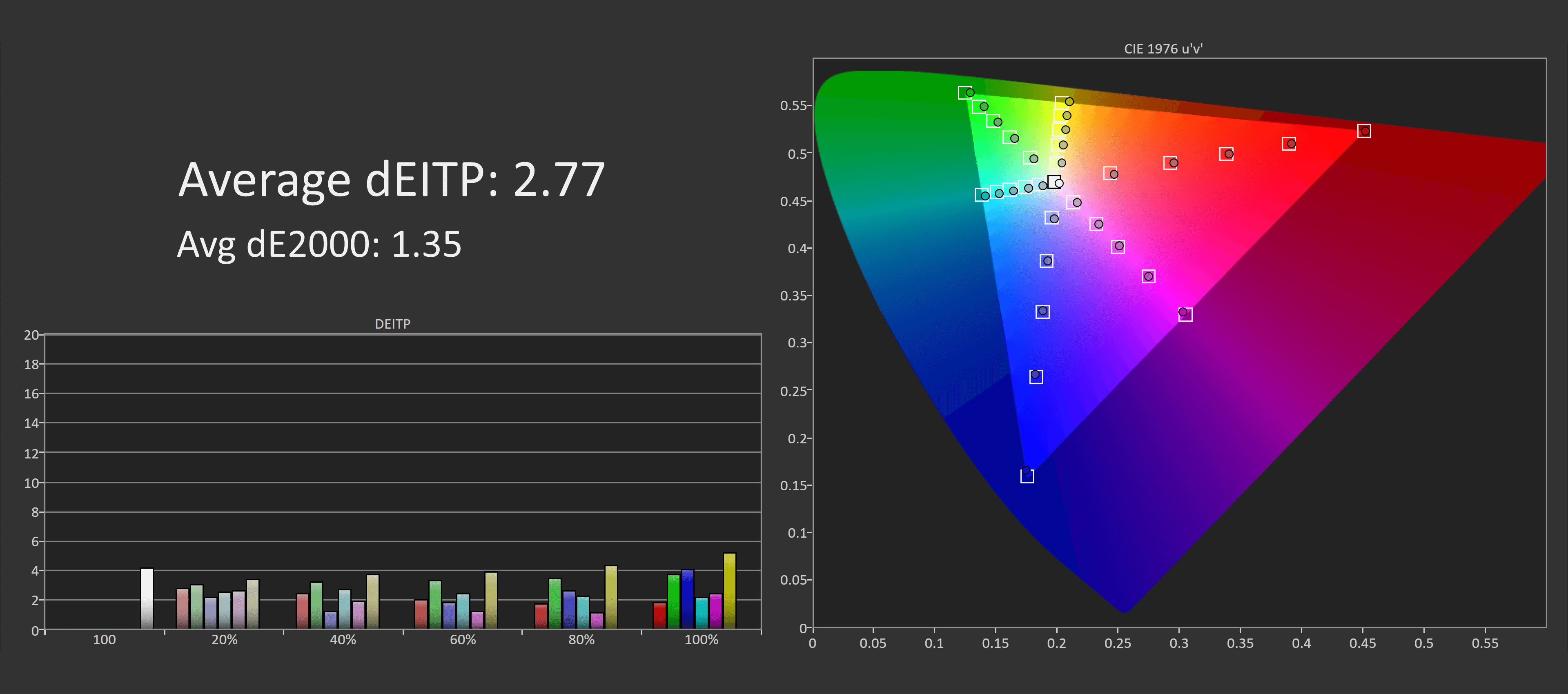
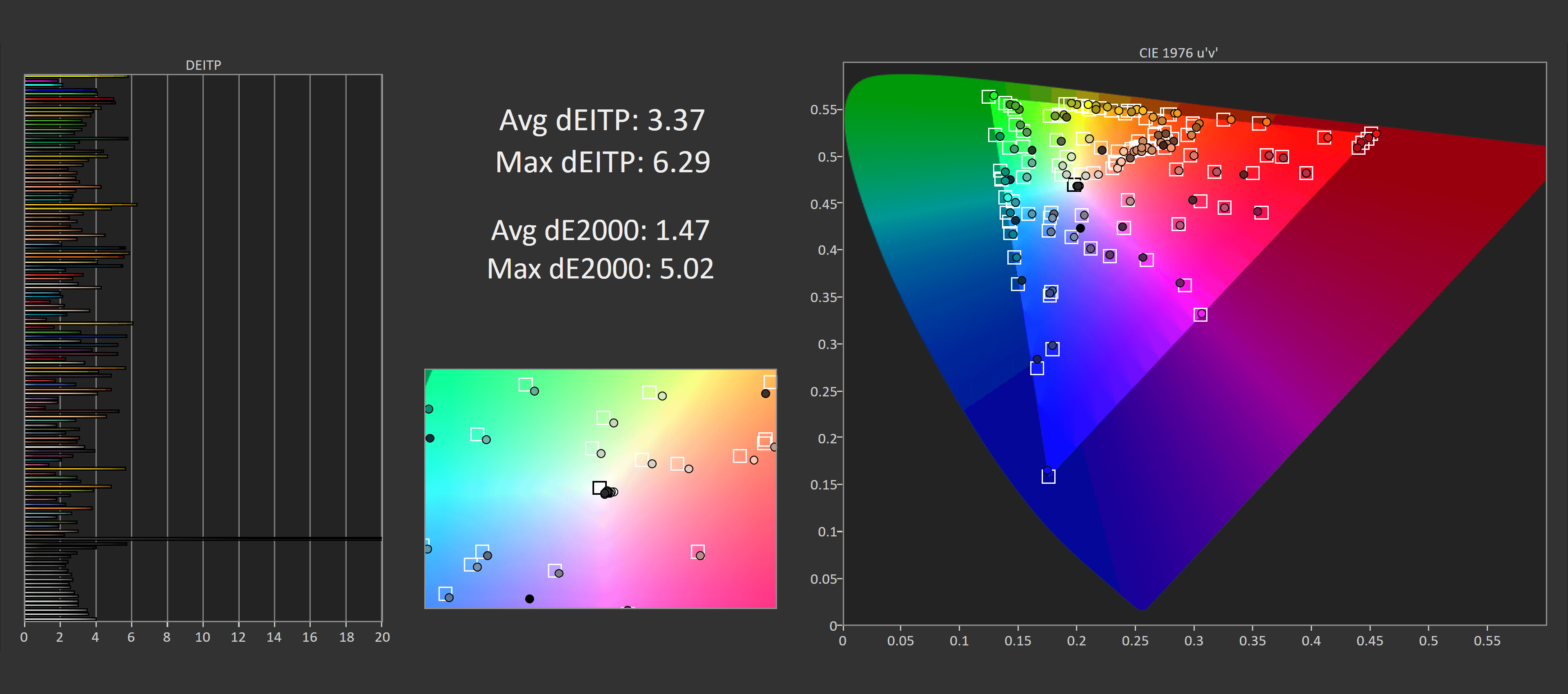
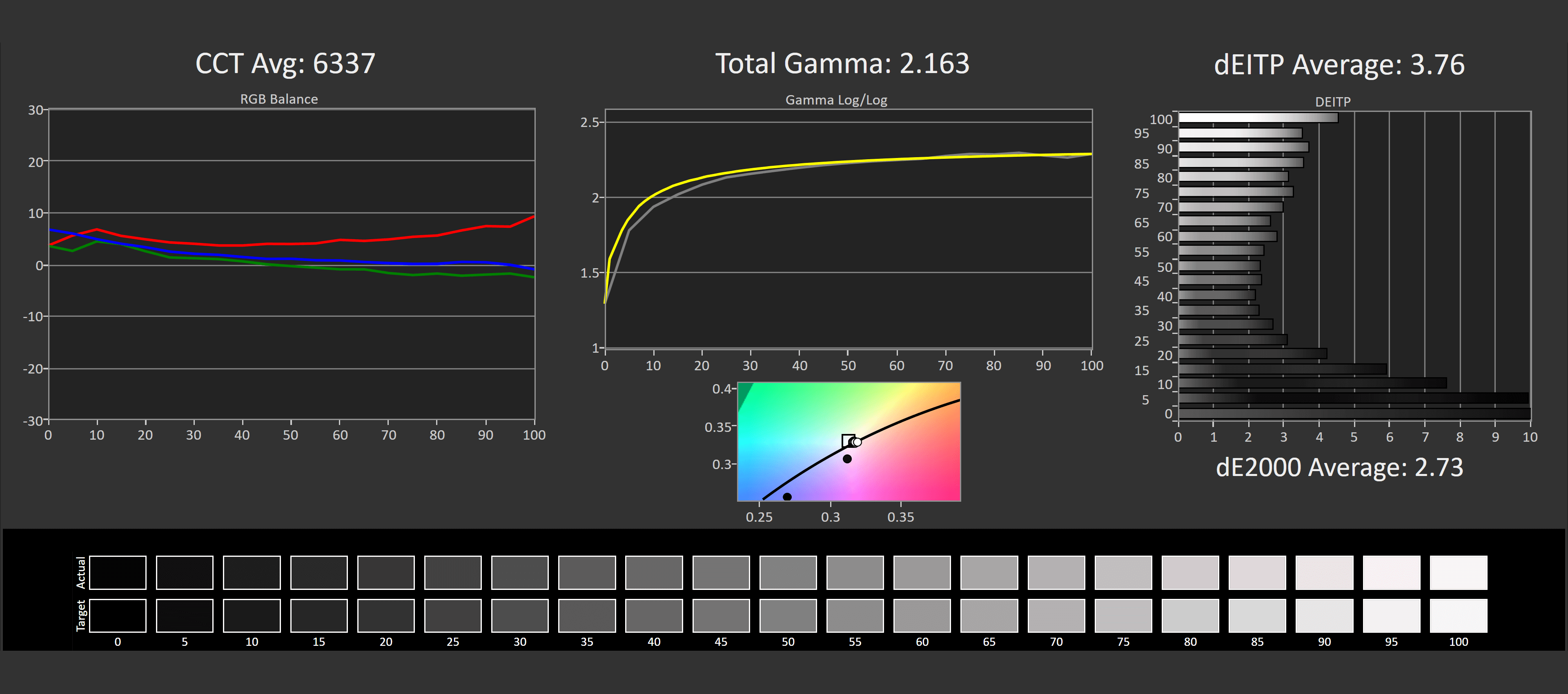
My unit had a decently accurate sRGB mode calibrated at the manufacturing plant, with deltaE 2000 results for saturation and ColorChecker below two.0. Even so greyscale was a affect off; good adherence to the gamma curve, simply a slight cherry tint from a wonky CCT average. Despite this, I would recommend using the sRGB style if you lot want a more accurate experience from OSD tweaks.
Calibrated Color Performance
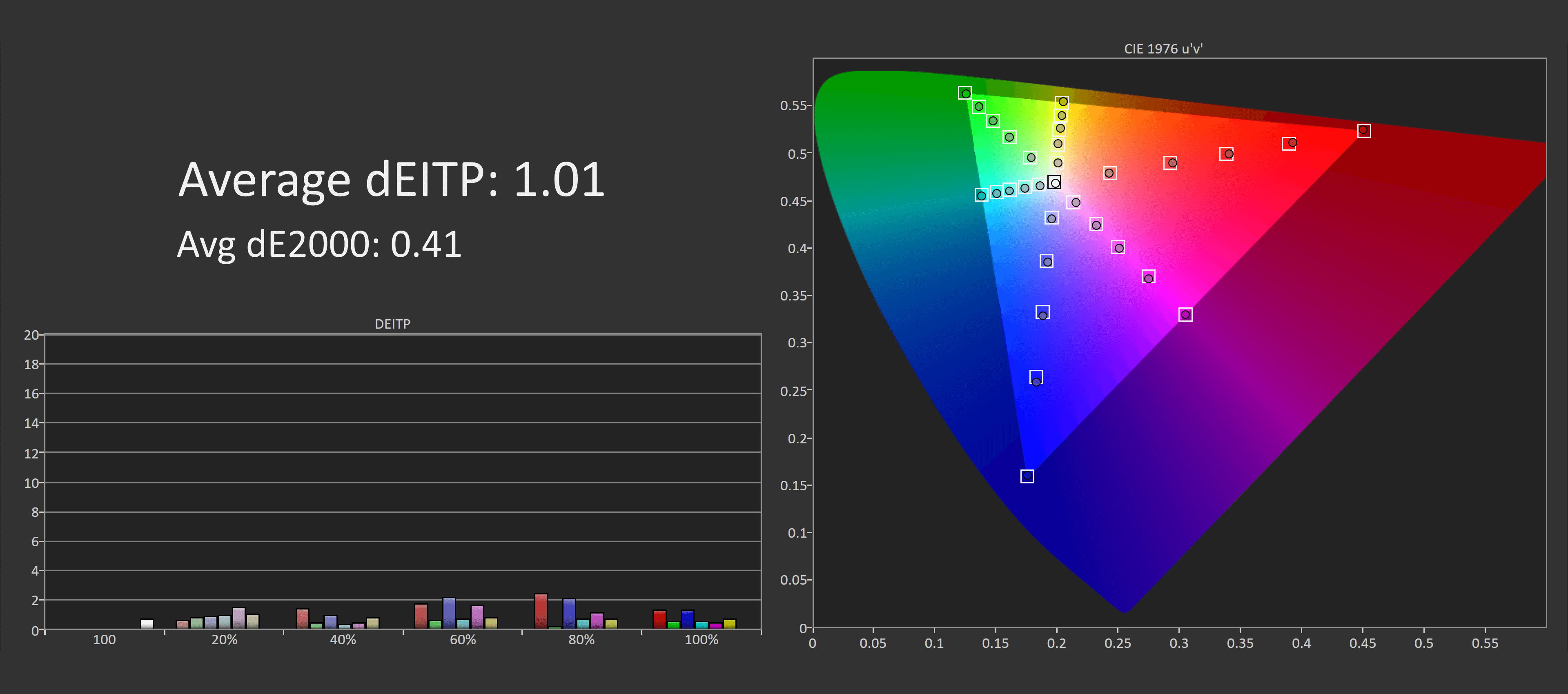
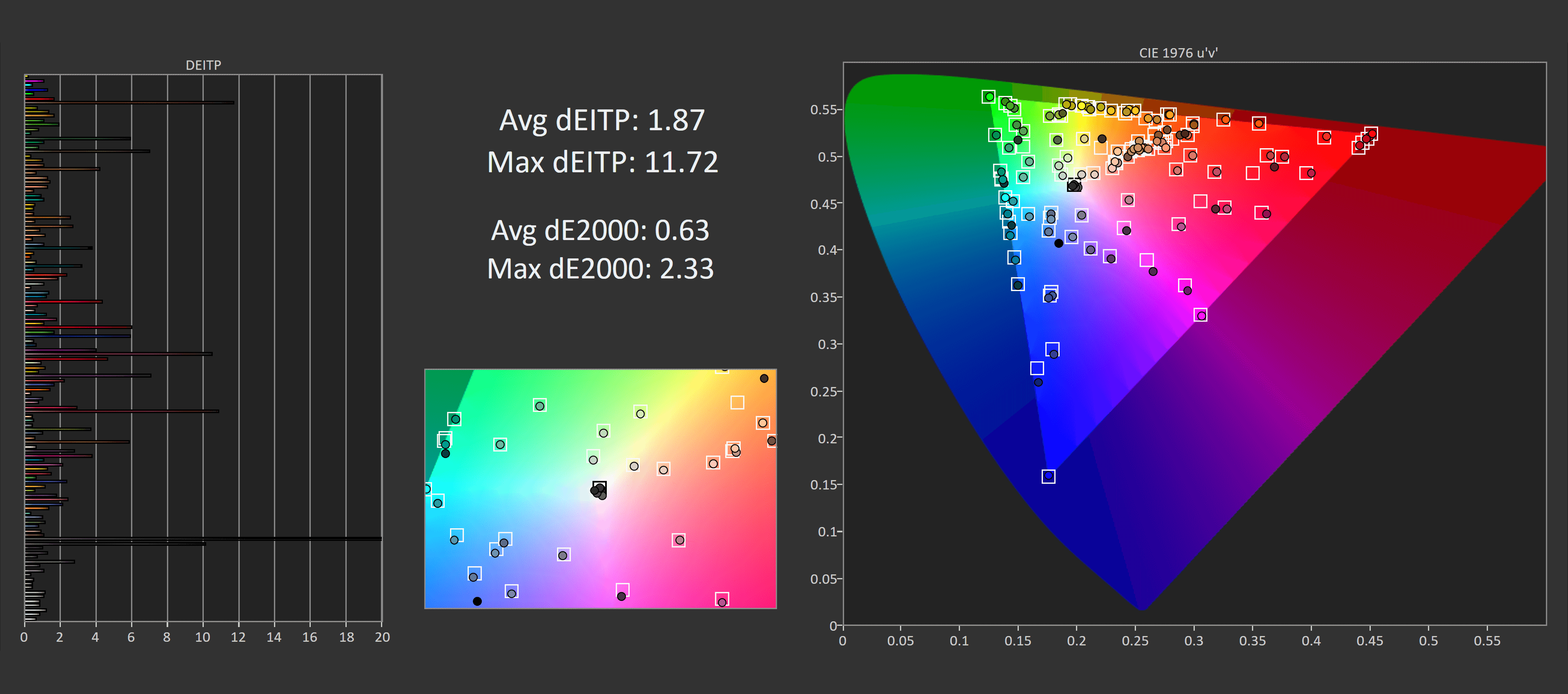
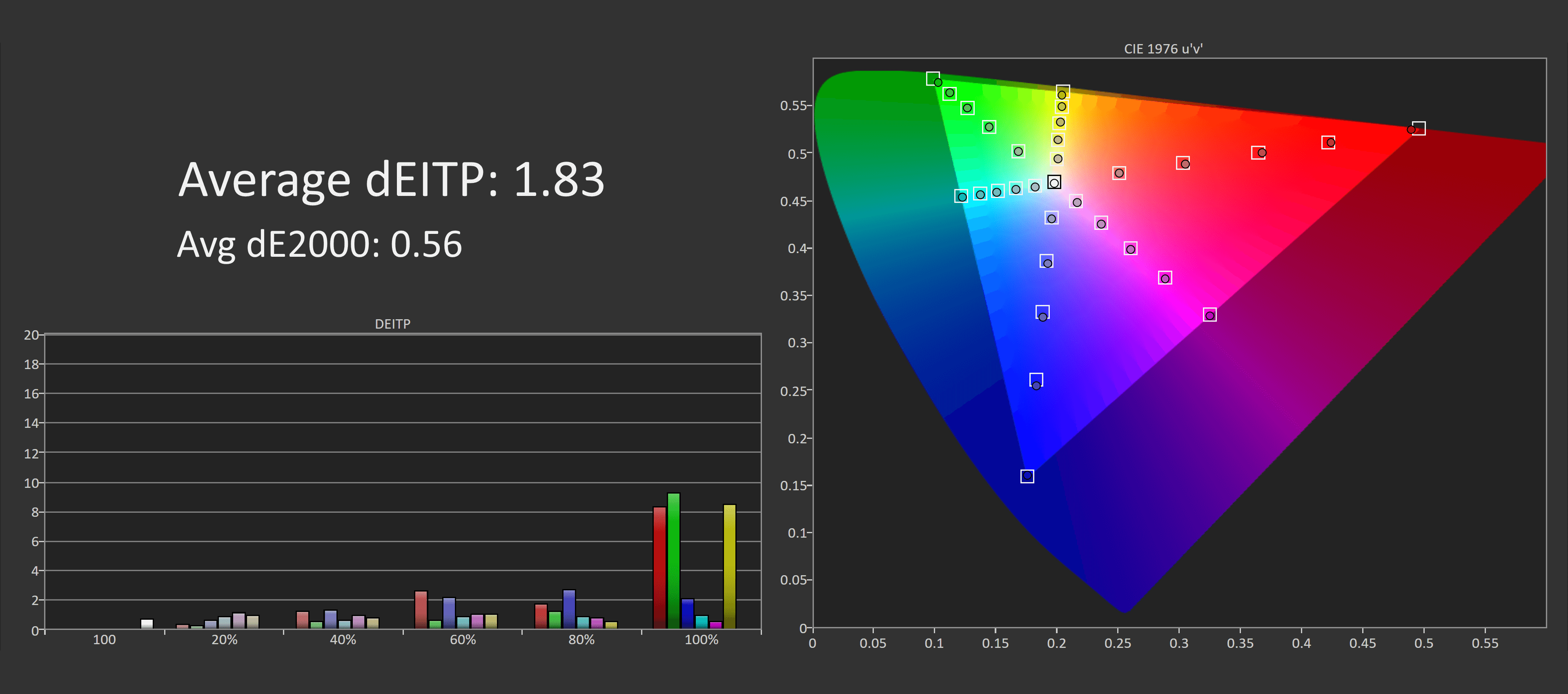
The next footstep is a total scale, which we accomplished using DisplayCAL. Every bit expected, sRGB results are very strong, and for P3 it'southward besides quite good aside from some very pocket-size problems right at the tip of the gamut where that last two-4% isn't covered.

Brightness is improved with the 27GP850 compared to the 27GL850, the new model does around 450 nits compared to 350 with the prior generation, then that'southward a solid improvement that will assist those in brilliant environments. Minimum brightness is outstanding, at below xxx nits, great for those that like a dim monitor for gaming at night.

The large story around LG's Nano IPS panels has always been the dissimilarity ratio. Unfortunately, LG accept non been able to shift the needle significantly with this new generation.
The 27GP850 had an 835:1 dissimilarity ratio after scale in my testing, meliorate than the 27GL850 I initially reviewed, just no better than other monitors that apply this panel similar the Dell S2721DGF. This means weak black levels and that may exist a problem for those that prefer gaming in darker rooms. Not all Nano IPS panels take such a low contrast ratio, it'due south much better on the 4K version for example, but the 27" 1440p model remains poor.



Viewing angles are still excellent, and so while the 27GP850 may have TN-like contrast, it does offer a much improve viewing experience overall. Uniformity on my unit was good without being astonishing, non likewise different from the 27GL850. In that location was a fleck of IPS glow with my model, although not equally much as with my 27GL850, and this does tend to vary from unit of measurement to unit so whatever I report hither may non be what you lot experience yourself.
Finally, about HDR performance, while the 27GP850 has received a DisplayHDR 400 certification and supports HDR inputs, it fundamentally lacks the hardware required for proper HDR like a full-array local dimming backlight. And so I wouldn't think of this as an HDR monitor in your ownership decision.
Who Is Information technology For?
LG continues to provide impressive monitors for the gaming marketplace. With the LG 27GP850, they company hasn't merely re-released a previous production with a few enhancements but LG has clearly assessed the market place, noted that some newer IPS monitors were offering better performance, and stepped up their game with their 2022 27-inch 1440p monitor. This has led to several improvements over the prior model.
Notably, response time functioning is better. Depending on the metric and refresh charge per unit tested, the LG 27GP850 is anywhere from ~v to 25% faster than the 27GL850. Combined with a higher refresh rate at 180Hz, this new display has visibly superior motion clarity and lower input latency.
To be clear, it doesn't need that college refresh charge per unit to be improve, even comparing 144Hz to 144Hz, the 27GP850 is amend in terms of response operation, a product of tweaked and improved overdrive modes.
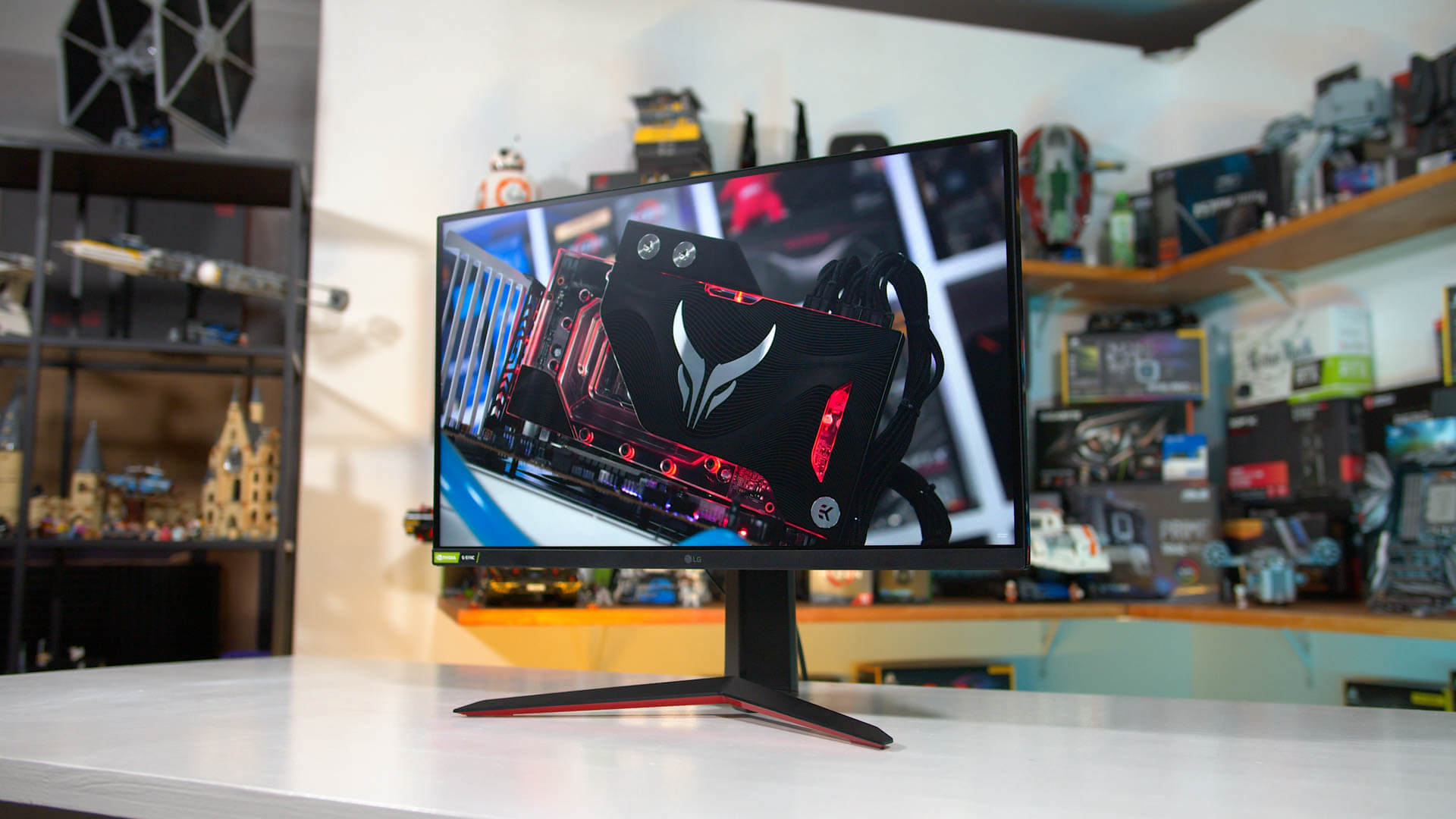
LG needed this considering in the past year or so nosotros've seen other fast IPS panels hit the market, like the AU Optronics panel seen in MSI's MAG274QRF-QD, offer a step above the older 27GL850 in performance.
The new 27GP850 is capable of matching or surpassing these newer panels, at times beating them in move performance. The add-on of backlight strobing is besides welcome, it's not the all-time version that we've seen, but at least it'due south at present bachelor in this refreshed model.
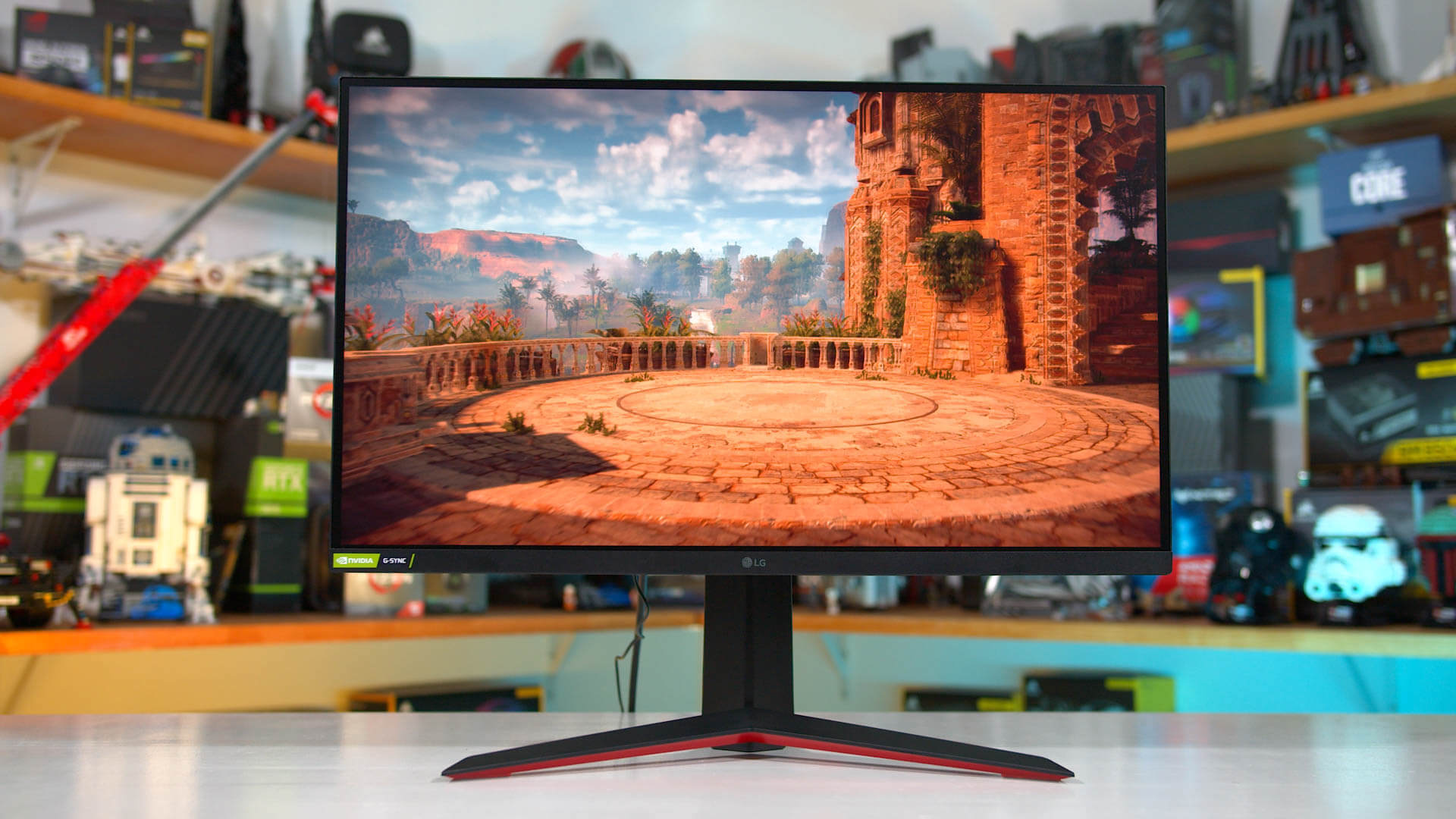
While improving motion clarity and input latency, LG have kept pretty much everything else the same. This means the aforementioned great wide gamut experience, aforementioned great viewing angles, aforementioned sort of factory scale and unfortunately, the same contrast ratio, which remains a weak spot for LG'due south offering. Nosotros do get higher brightness and a refreshed design though.
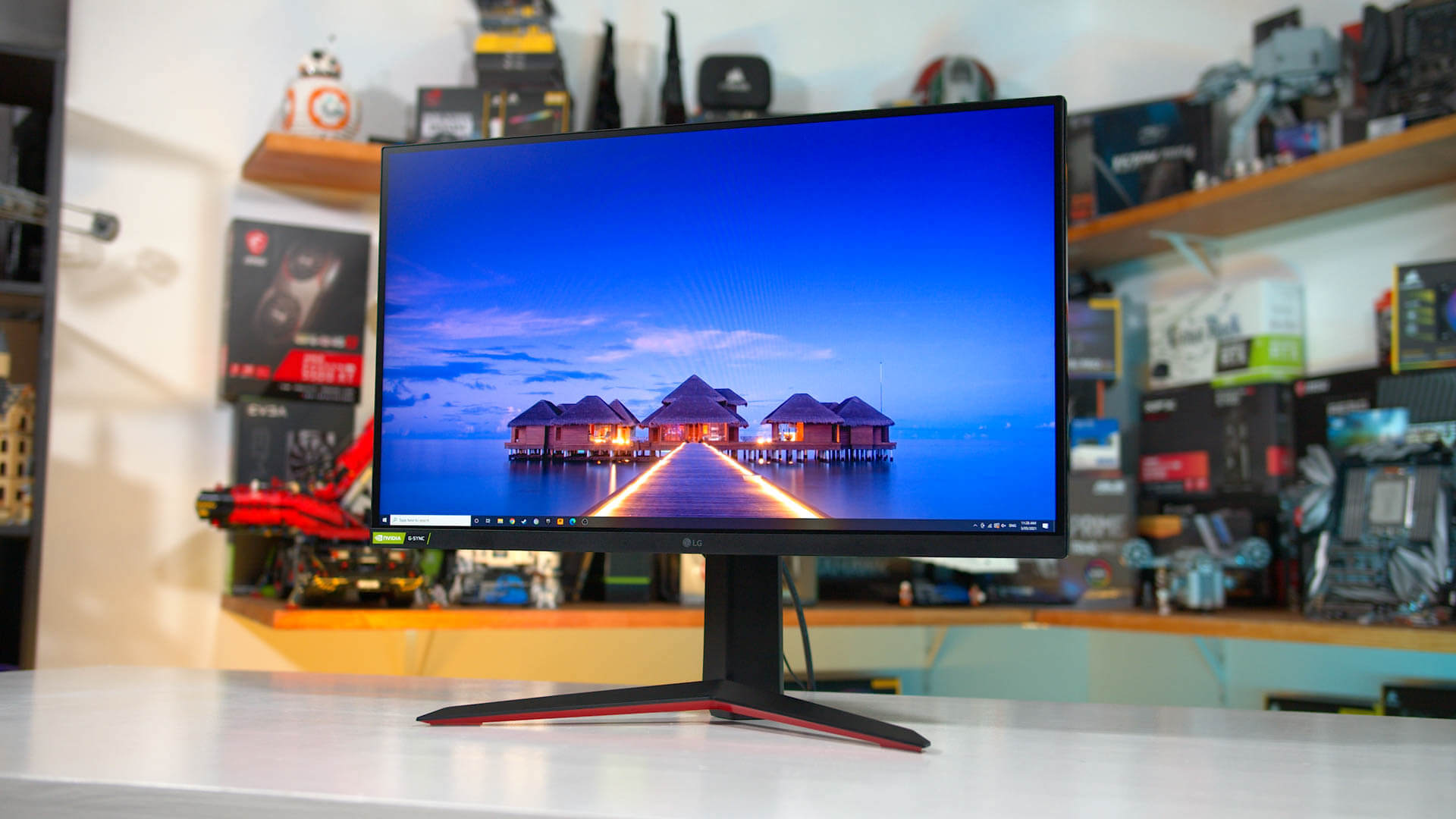
A major selling point of the LG 27GP850 is also its proper, functional sRGB emulation mode, which eliminates oversaturation when viewing standard content like YouTube videos or games. Many wide gamut monitors stuff this up and you take no choice just to view an oversaturated epitome in some instances. Full praise to LG for thinking of both gaming operation and color accurateness and executing well in both areas.
Merely how about value?
We do remember the 27GP850 is a corking monitor, but should yous pay $500 for information technology? That'southward honestly a tricky question, considering it'due south on the higher end of current medium refresh rate display pricing. The MSI MAG274QRF-QD and Dell S2721DGF, for example, are typically found betwixt $400 and $450, then is the LG worth the actress cost?
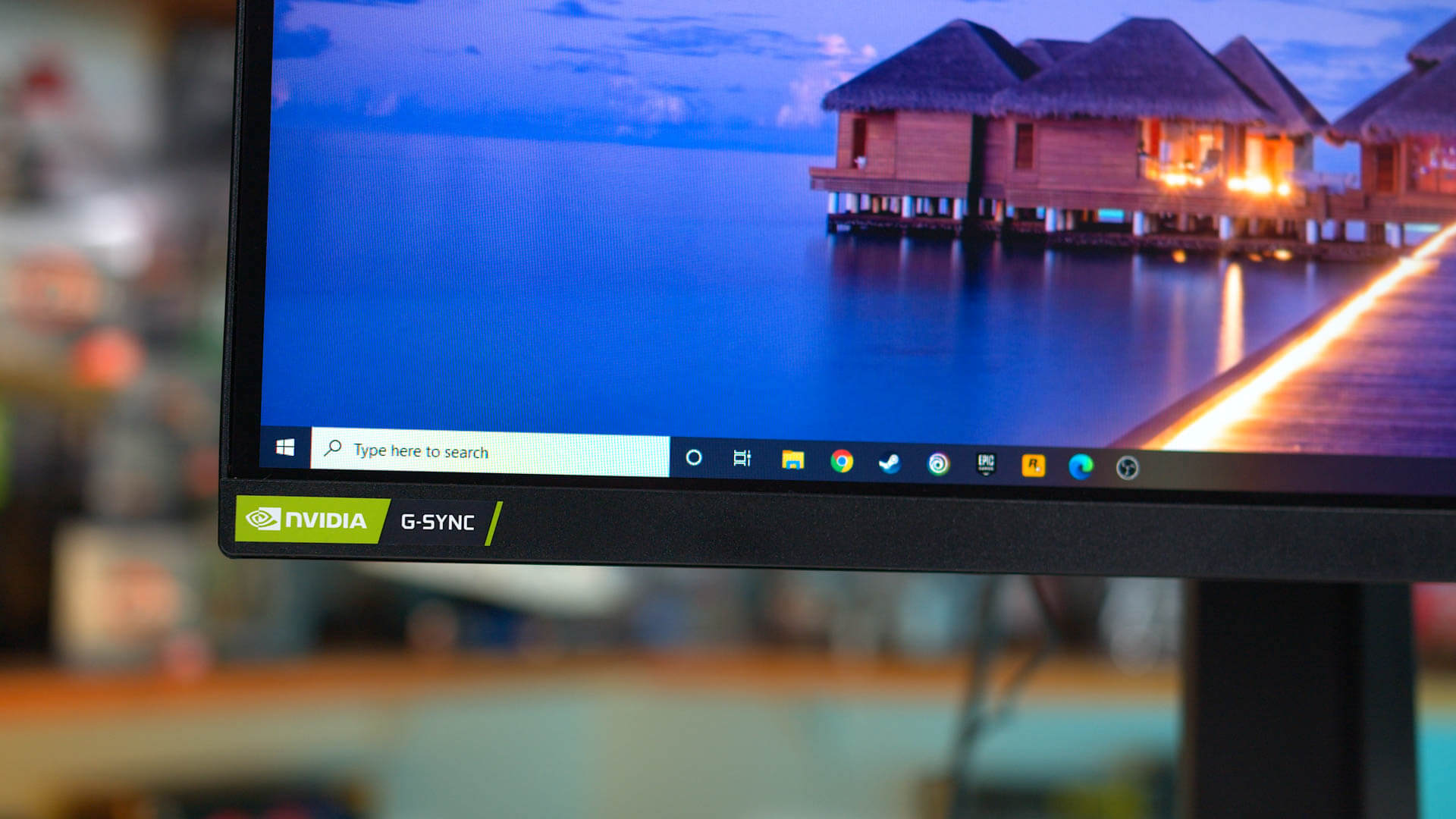
In my opinion, the LG 27GP850 is the best in its form from the monitors I've tested, with the combination of great response times and a functional sRGB mode pushing it over the edge. It's generally worth the price premium and its overall rest of features with few weak areas makes it a monitor you won't be disappointed to have.
However, it is a close call. The MSI is what I'd recommend if y'all want Adobe RGB support, college contrast or better backlight strobing at a lower price, even so its lack of sRGB emulation and worse height performance than the 27GP850 doesn't go far the outright best. The Dell S2721DGF is still a great bang for buck choice as well, but it doesn't have the suite of features on offer hither given its closer to the last-gen 27GL850 overall.
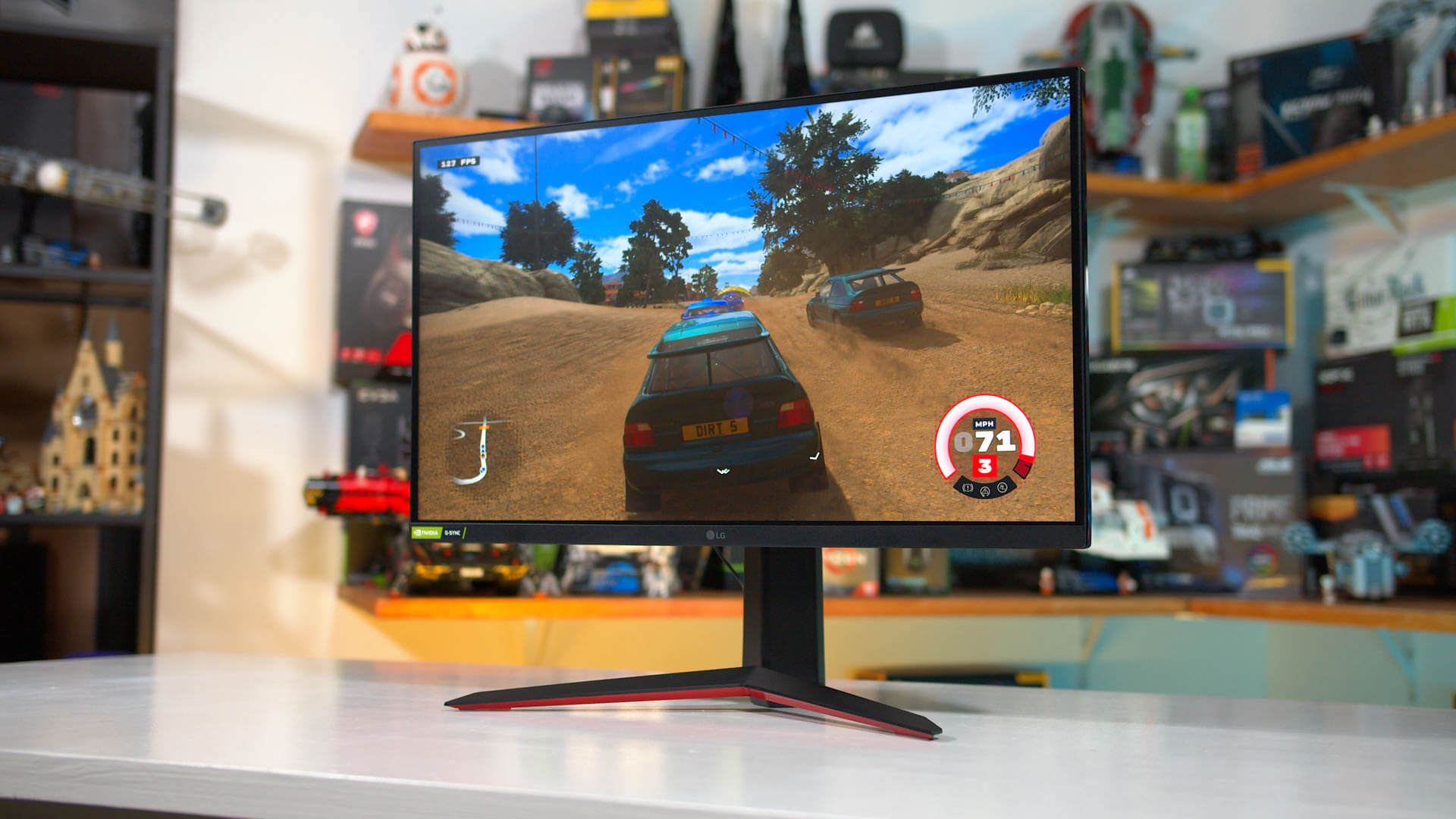
There are so many dandy gaming monitor options bachelor to purchase these days that you should be able to find something for your specific needs, and in many cases we recollect the 27GP850 will be ticking a lot of boxes so it gets our full recommendation.
Shopping Shortcuts:
- LG 27GP850 on LG.com, Amazon, BHPhoto
- MSI MAG274QRF-QD on Amazon
- Dell S2721DGF on Amazon
- Alienware AW2721D on Amazon
- Samsung Odyssey G7 32" on Amazon
- HP Omen X 27 on HP Shop
- LG 27GL850 on Amazon
Source: https://www.techspot.com/news/89625-lg-27gp850-review-faster-clearer-better.html
Posted by: longprajectow.blogspot.com


0 Response to "LG 27GP850 Review: Faster, Clearer, Better"
Post a Comment